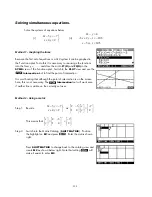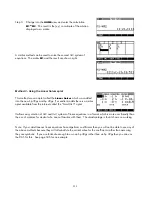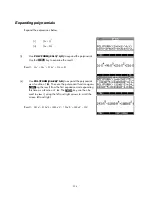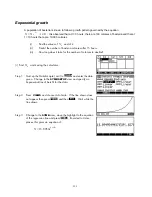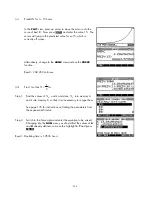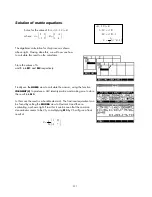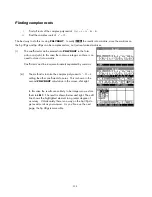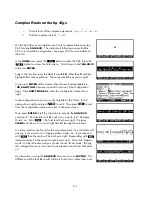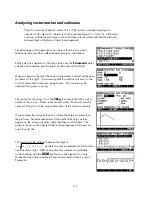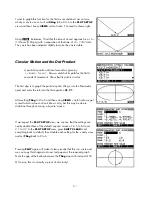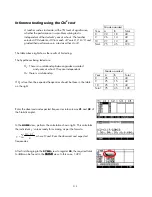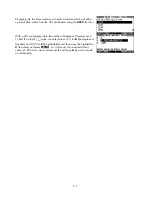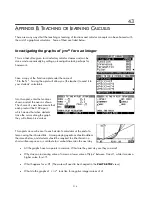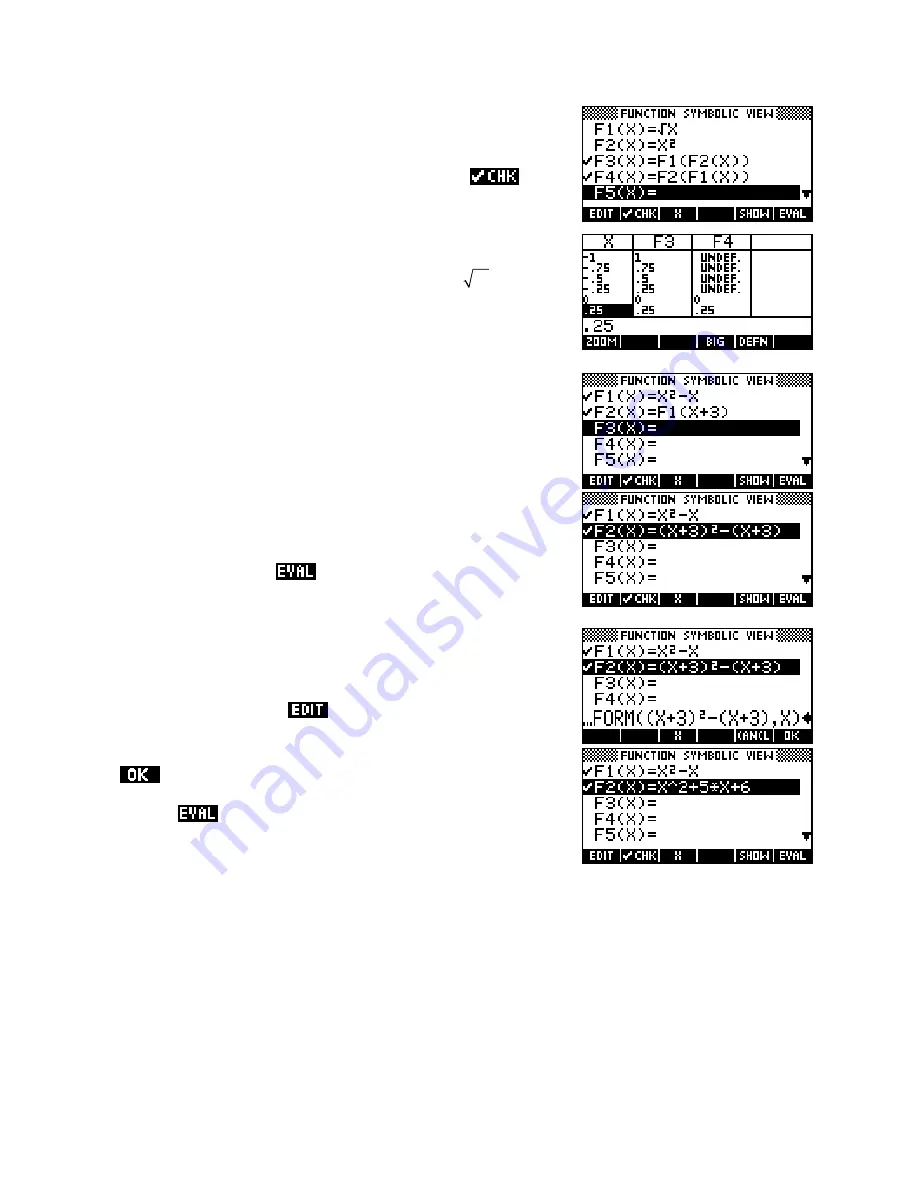
ii.
When discussing the concept of a domain, the
NUM
view can be
very useful in developing this (see right).
In the
SYMB
view, enter the functions shown right, un
ing the
first two non-composite functions. In the
NUM
view shown, I have
used the
NUM SETUP
view to set the scale to start at -1 and
increase in steps of 0.25.
( )
=
2
x
is not the
( )
=
x
, and why
f
f
x
is not the same as
f
f
x
)
)
Obviously discussion will now center on why
f x
same as
f x
1
(
2
( )
)
2
(
1
(
for x<0.
iii.
Composite functions can easily be defined, as can be seen in the
examples to the right.
In the first screen shot,
F1(X)=X
2
-X
and
F2(X)=F1(X+3)
have been
entered into the
SYMB
view.
The second, substituted view is obtained by moving the highlight to
F2(X)
and pressing the
button.
If desirable, you can further simplify using
POLYFORM
. With the
highlight on
F2(X)
, press
. Move the highlight to the start of
the expression and use the
MATH
button to enter “
POLYFORM(
”.
Now move to the end and add “
,X)
” to the expression and press
.
Pressing
again now will give the result shown right.
316

